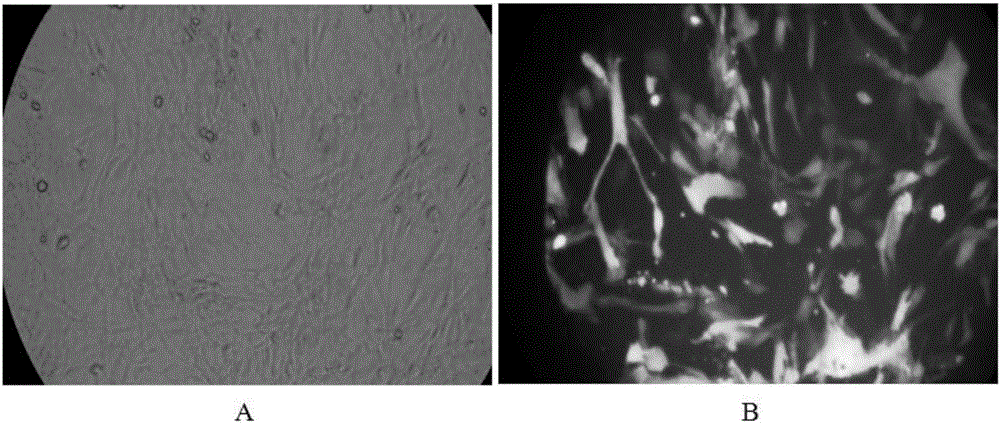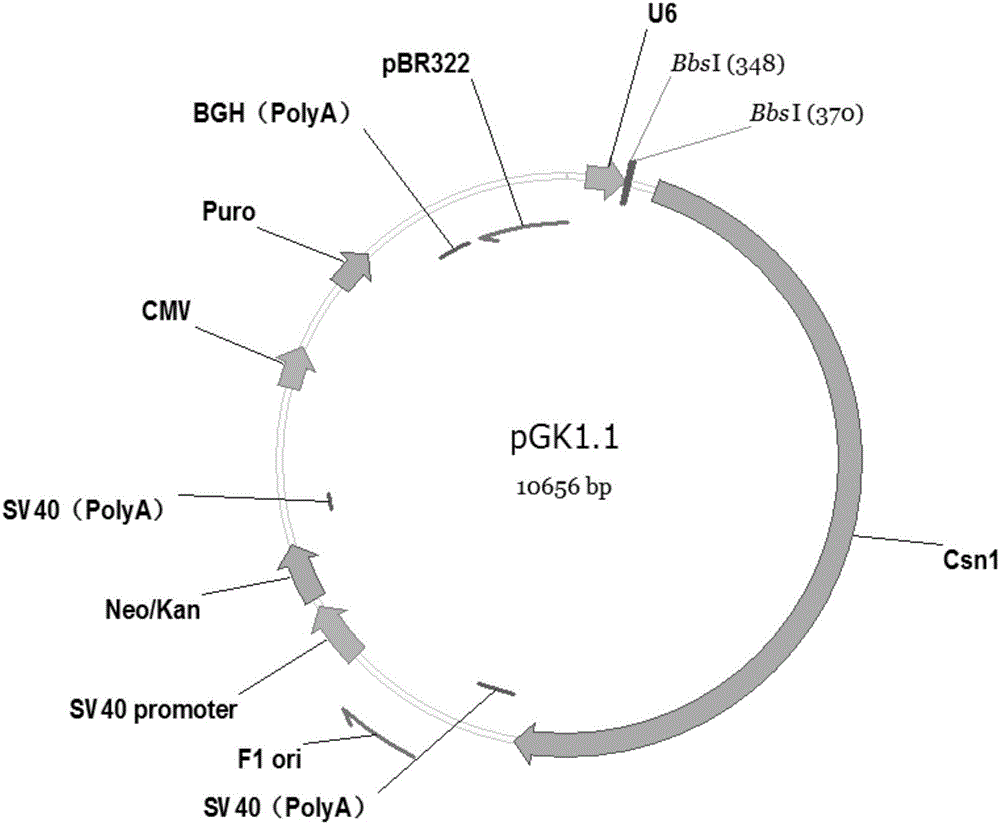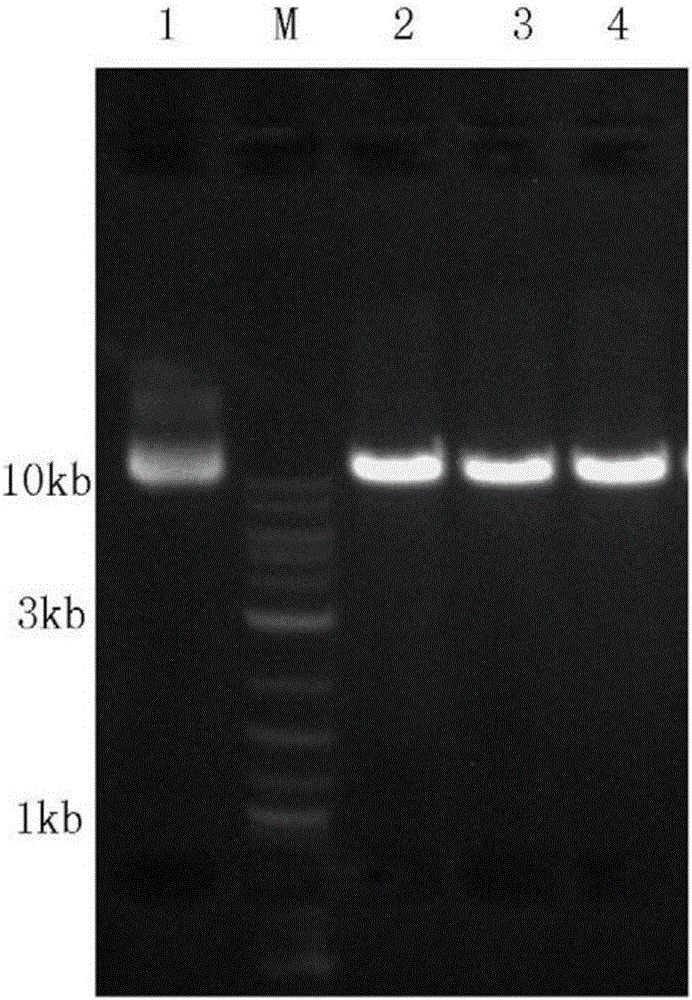Gene knockout carrier and gene knockout method of NLRP1 gene of MH7A cell
A gene knockout and vector technology, applied in the field of molecular biology, can solve problems such as not very clear, and achieve the effect of promoting research and promoting pathogenesis
- Summary
- Abstract
- Description
- Claims
- Application Information
AI Technical Summary
Problems solved by technology
Method used
Image
Examples
Embodiment 1
[0053] Embodiment 1 pre-experimental operation
[0054] 1. Monoclonal growth verification test.
[0055] Limiting dilution: Make MH7A cells into a cell suspension and count the cells, then take a certain amount of cell suspension for dilution, so that the number of cells in each well of the final 96-well plate is 1 or 5, (100 μl per well) after confirming that the dilution is accurate , will be diluted at 37°C, 5% CO 2 Static culture in the incubator; after 7 to 10 days, under the microscope, it was found that monoclones could be formed, and the cells had a tendency to proliferate and could form cell clusters.
[0056] 2. Explore the electroporation conditions of MH7A cells
[0057] After the MH7A cells were made into a uniform single-cell suspension, take a part of it and mix it evenly for platelet trypan blue staining and counting (the viable cell rate > 95% can be electroporated), and calculate the concentration of the cell suspension; take 1 × 10 7 Suspend the cells in ...
Embodiment 2
[0060] The construction method of embodiment 2 gene knockout vector
[0061] In this embodiment, a method for constructing a gene knockout vector for knocking out the NLRP1 gene is provided, comprising the following steps:
[0062] 1. Target site design and synthesis
[0063] 1) Design CRISPR-Cas9 knockout target sites
[0064] First, a pair of oligo DNA of about 20bp needs to be designed in the target DNA region, and designed through the following online tools:
[0065] CRISPR Design at MIT: http: / / crispr.mit.edu /
[0066] The common CDS region of the five transcripts of the NLRP1 gene was selected, and the first exon of the common CDS region was found for target site design. It is best to input only one exon at a time to avoid the Guide sequence spanning introns.
[0067]
[0068] Among them, bases in capital letters represent exons, and bases marked in bold and underlined represent selected target sequences.
[0069] The NCBI scoring of the target sequence is as fol...
Embodiment 3
[0093] In this embodiment, a method for knocking out the NLRP1 gene in MH7A cells is provided.
[0094] 1. Transform the gene knockout vector obtained in Example 2 into G10Competent Cell:
[0095] Take 1 tube of G10Competent Cell from the -80°C refrigerator and thaw on ice.
[0096] After melting, add 10 μl of the ligation product, flick to mix, and incubate on ice for 30 minutes.
[0097] Shock in a water bath at 42°C for 60 sec, quickly take it out and place it on ice to cool for 2-3 min.
[0098] Add 800 μl of anti-SOC-free liquid medium to the tube, and resume culturing on a shaker (37° C. / 160 rpm) for 45 minutes.
[0099] Centrifuge at 4500 rpm for 5 min, discard 800 μl of supernatant, suspend the pellet in the remaining 100 μl of supernatant, spread evenly on the screening plate containing Kan resistance, and incubate overnight.
[0100] 2. Screen positive recombinants
[0101] On the second day of transfection, use the upstream primer VSP primer and the respective d...
PUM
 Login to View More
Login to View More Abstract
Description
Claims
Application Information
 Login to View More
Login to View More - R&D
- Intellectual Property
- Life Sciences
- Materials
- Tech Scout
- Unparalleled Data Quality
- Higher Quality Content
- 60% Fewer Hallucinations
Browse by: Latest US Patents, China's latest patents, Technical Efficacy Thesaurus, Application Domain, Technology Topic, Popular Technical Reports.
© 2025 PatSnap. All rights reserved.Legal|Privacy policy|Modern Slavery Act Transparency Statement|Sitemap|About US| Contact US: help@patsnap.com



